
When it comes to home essentials, few things are as crucial as a well-functioning toilet. Yet, many overlook the intricate plumbing required to keep this indispensable fixture running smoothly. Understanding the plumbing needed for a toilet not only helps in troubleshooting issues but also ensures efficient installation and maintenance.
At the heart of toilet plumbing lies a complex network of pipes and valves, each playing a vital role in water supply and waste removal. From the supply line delivering fresh water to the flush valve controlling the flow, every component must work in harmony. Proper installation and regular checks can prevent leaks and costly repairs.
For those embarking on a bathroom renovation or simply curious about the workings of their loo, grasping the basics of toilet plumbing is invaluable. This knowledge empowers homeowners to make informed decisions, whether tackling a DIY project or consulting a professional plumber.
Toilet plumbing involves several components essential for its functionality. The supply line, usually connected to the home's main water supply, delivers water to the toilet tank. The shut-off valve allows control over water flow to the toilet, making repairs and maintenance more manageable. The fill valve regulates the water level in the tank, ensuring optimal water usage and preventing overflow.
A flush valve is responsible for releasing water from the tank into the bowl during flushing. The efficient working of the flush valve significantly impacts flushing performance. The overflow tube directs excess water to the bowl if the tank fills too high, preventing flooding.
The wax ring is a crucial seal between the toilet base and the drainpipe, preventing leaks and odours. For waste removal, the trap is inside the toilet maintains water in the bowl to block sewer gases but you'll need a pan connector to connect the toilet to the sewer line. Vent stacks ensure proper air pressure to assist in waste removal and maintain drainage efficiency.
Understanding these components helps in identifying issues, performing basic repairs, or communicating effectively with plumbers. A solid grasp of these basics provides homeowners confidence during installations, repairs, and renovations.
Toilet plumbing relies on specific components that work together to ensure efficient operation and effective waste removal. These elements must function properly to maintain a reliable and leak-free system.
The water supply line connects the toilet to the home's main water supply. Typically made of stainless steel, copper, or plastic, it facilitates the steady flow of water into the toilet tank. Proper installation and maintenance prevent leaks and ensure efficient water delivery. The flexi-connectors are great!
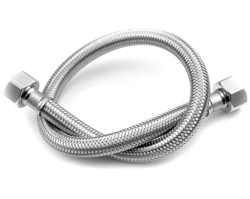
The flush valve releases water from the tank into the bowl during flushing. This component plays a crucial role in removing waste effectively. Adjustable flush valves can help regulate water usage to improve efficiency.
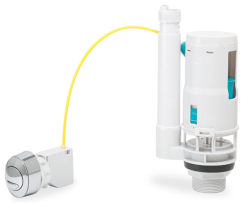
The fill valve regulates the refilling of the toilet tank after a flush. It's responsible for maintaining the water level by opening and closing the supply as needed. Modern fill valves often include options for water-saving adjustments.
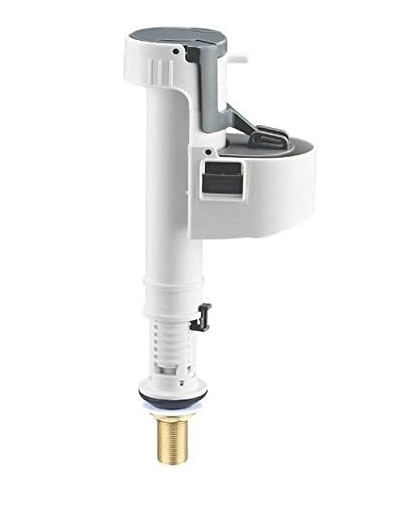
In the UK the toilet trap is inside the toilet so you don't need to worry about getting/installing one of those.
Depending on what type of toilet you've chosen and your existing drain pipework determines the type of connector you need. Here are two types of pan connectors the 90 degree and the offset connector:
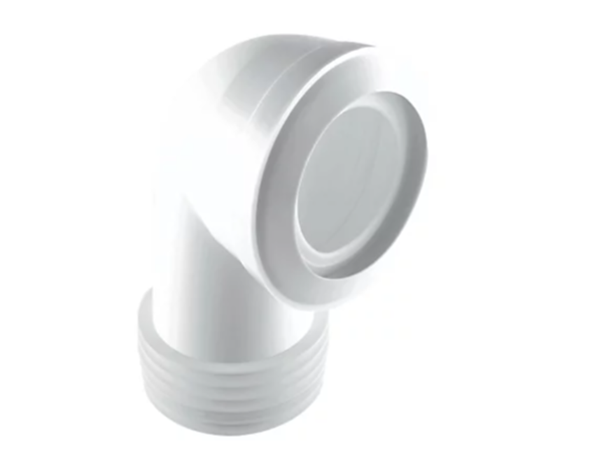
90 degree pan connector
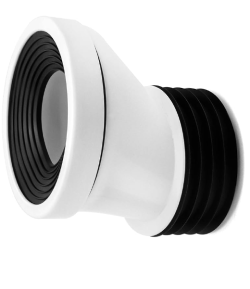
Offset Pan Connector
Understanding the different types of toilet installations assists in making informed decisions during renovations or new installations.
Standard toilets stand directly on the bathroom floor and utilise gravity for efficient flushing. They connect to the plumbing system through a floor flange. Common in residential homes, these toilets often feature a two-piece design, including a separate tank and bowl. Installation involves securing the toilet to the flange using bolts and sealing with a wax ring to prevent leaks.
Wall-mounted toilets attach directly to the wall, creating a modern look and saving floor space. The plumbing pipes and tank hide within the wall, requiring additional support from a concealed frame system. Installation mandates precise measurement to ensure proper alignment. Common in commercial and high-end residential settings, wall-mounted designs offer easy floor cleaning but demand expert installation due to the complex setup and weight distribution.
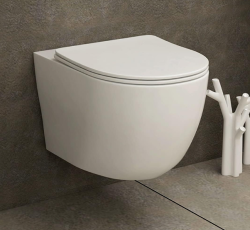
With this type f toilet you also need a concealed cistern that's mountain inside cabinet or the wall behind the toilet.
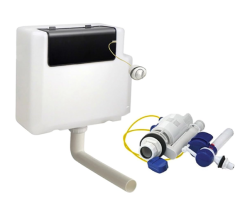
Toilet installation demands attention to detail, ensuring functionality and compliance with plumbing standards. Proper steps and avoiding common errors can significantly impact efficiency and longevity.
Regular inspection of toilet plumbing enhances performance and extends lifespan. Look for wear on components like the wax ring and fill valve, as these are critical for sealing and water regulation. Replace these parts promptly if damage is evident to prevent leaks.
Effective cleaning practices help maintain optimal function. Use non-corrosive cleaning agents to avoid damaging pipes and valves. Incorporate weekly flushing with hot water to remove potential clogs in the trapway.
Pay attention to minor leaks or unusual sounds. These often signal underlying issues. Regularly check joints and connections for moisture or rust, which indicate possible leakage points.
Investing in quality parts ensures long-term benefits. Choosing reliable components like durable washers and high-quality shut-off valves reduces the chance of future failures and costly repairs.
Finally, professional maintenance offers valuable preventative care. Annual inspections by qualified plumbers provide early detection of potential issues, sustaining the system's reliability and efficiency.
A well-functioning toilet relies on a comprehensive understanding of its plumbing system. By familiarising themselves with the key components and installation processes, homeowners can ensure efficient operation and prevent costly issues. Regular maintenance and prompt attention to any signs of trouble are essential for preserving the integrity of the plumbing system. Investing in quality parts and professional inspections further safeguards against potential failures. Eventually, knowledge of toilet plumbing empowers homeowners to tackle DIY projects with confidence and communicate effectively with professionals, making informed decisions during renovations and repairs.
Grasping the basics of toilet plumbing enables homeowners to identify potential issues early, perform minor repairs, and communicate effectively with plumbers. This knowledge helps in making informed decisions during renovations or installations, ultimately saving time and money.
The article lists the supply line, shut-off valve, fill valve, flush valve, overflow tube, and vent stacks. Each component is vital for controlling water flow, preventing leaks, and ensuring efficient waste removal in a toilet system.
Consider space, aesthetic preferences, and installation complexity. Standard toilets stand on the floor and are easier to install, while wall-mounted toilets save space and offer a modern look but require precise installation and proper wall support.
The fill valve regulates the water level in the toilet tank, ensuring efficient flushing. Proper maintenance of the fill valve is vital to prevent overflows and ensure optimal toilet performance.
Avoid neglecting the flange condition, improper wax ring placement, overtightening bolts, skipping leak tests, and incorrect supply line connections. These mistakes can lead to leaks and long-term damage.
The answer YES you can install a toilet yourself. Watch our vides, read our blogs or book a 30-minute Consultation with Betsy!
The article advises regular inspections, prompt replacement of damaged parts, using non-corrosive cleaning agents, and being vigilant of leak indicators. Investing in quality parts and scheduling annual professional inspections are also recommended for system reliability.
The water supply line connects the toilet to the main water supply, ensuring a consistent flow for flushing. Understanding its function is crucial for maintaining proper water pressure and avoiding leaks.